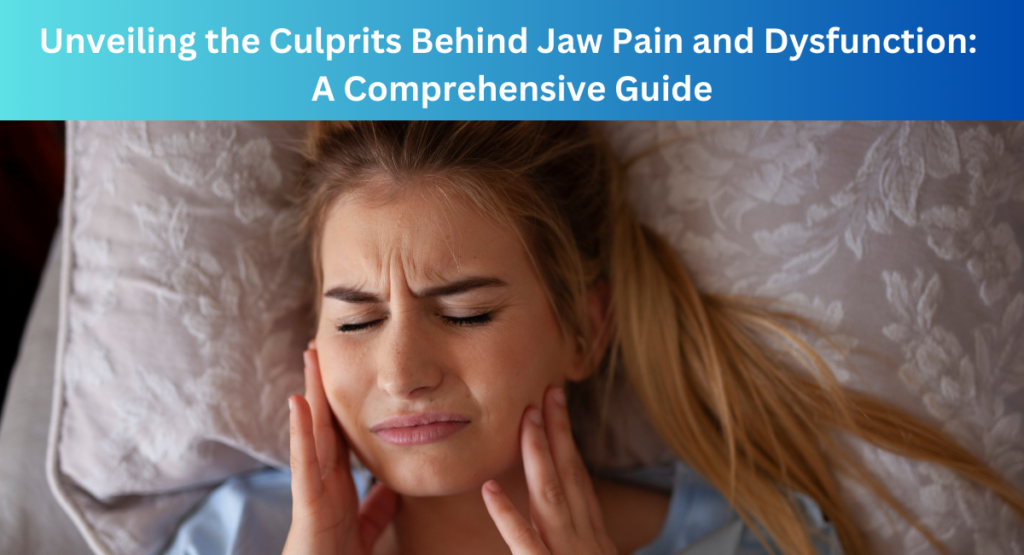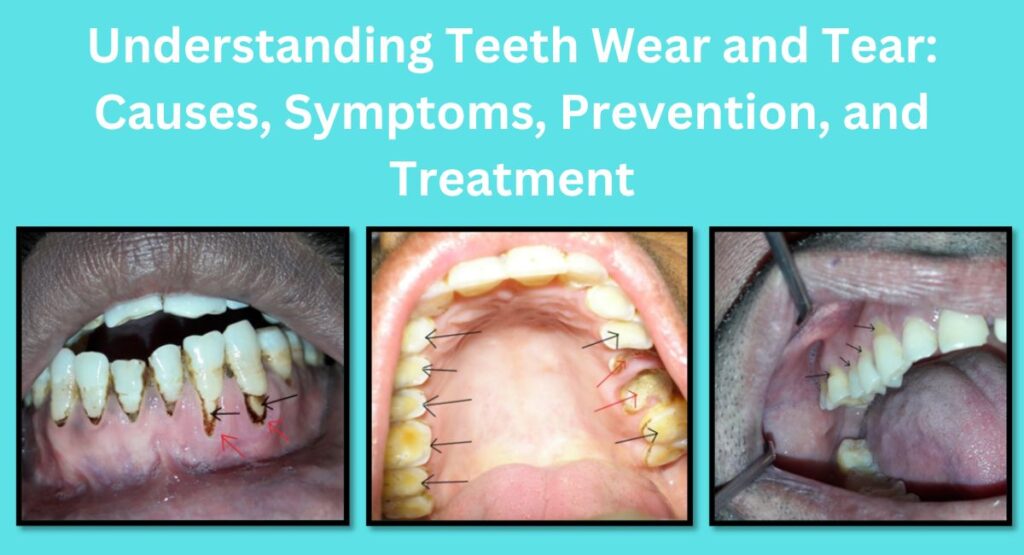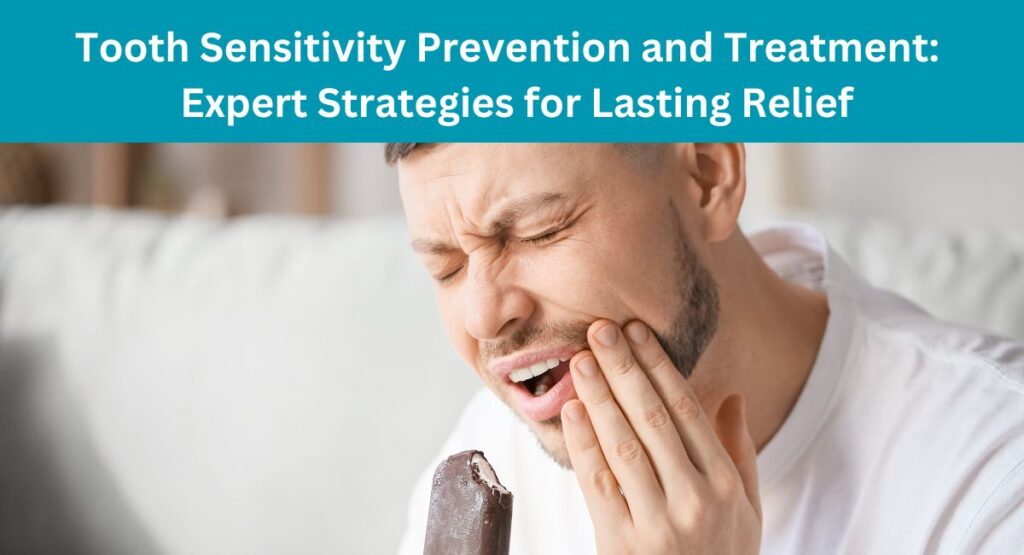
Jaw pain and dysfunction
The upper jaw is securely fused to the skull, forming the immovable foundation of the facial structure. Conversely, the lower jaw is the mobile component, allowing us to engage in essential functions such as chewing and speaking. The Temporomandibular Joint (TMJ) serves as the pivot point where the lower jaw, known as the mandible, connects with the temporal bone of the skull. Situated bilaterally, just in front of the ears, this joint facilitates the opening and closing of the lower jaw, enabling daily activities. However, problems affecting the TMJ and its associated masticatory muscles can lead to discomfort and restricted jaw movement, collectively referred to as Temporomandibular Disorder (TMD) or Temporomandibular Joint Disorder (TMJD), commonly known as jaw pain and dysfunction. In this article, we will delve into the causes of jaw pain and dysfunction, exploring the various factors that can lead to these distressing conditions.

Temporomandibular Joint (Jaw-joint)
Temporomandibular Joint Disorders (TMDs)
TMDs are a group of conditions that affect the temporomandibular joint (TMJ) and the surrounding muscles, leading to symptoms like jaw pain, clicking or popping noises, and restricted jaw movement. In cases of TMDs, structural damage can occur to the joint components, the joint itself, associated ligaments, and muscles. TMD encompasses both structural and functional issues. While some individuals may experience functional problems without structural damage, others may exhibit physical changes in the joint or associated structures, with or without concurrent functional issues.
Jaw pain and dysfunction can significantly impact one’s daily life, making even the simplest tasks like eating and speaking uncomfortable. Understanding the root causes of these issues represents the initial stride towards prevention, relief, and effective management. While symptomatic relief is crucial for pain alleviation and reducing inflammation, addressing the underlying causes is imperative to prevent recurrences, initiate the healing process, and avoid irreversible damage. Most treatments primarily focus on symptomatic relief, which is vital, but it’s equally essential to remove the causes for long-term solutions.
Causes of Jaw Pain and Dysfunction
Jaw pain and dysfunction can stem from various sources, each with its unique set of triggers. Let’s delve into the diverse factors that contribute to jaw pain and dysfunction.
1. Stress and Anxiety
Stress and anxiety can physically manifest as jaw tension and clenching, contributing to chronic jaw pain. These emotions trigger teeth clenching or grinding, even during sleep or without awareness, causing micro-injuries and excessive jaw strain. The resulting Temporomandibular Disorder (TMD) creates a stress-pain-stress cycle, wherein stress, anxiety, or psychological issues make the jaw overwork, even during rest. This complex connection underscores the role of emotional well-being in TMD development.
2. Jaw Clenching and Bruxism (Teeth Grinding)
Clenching involves habitually holding your teeth together tightly without grinding them, whereas bruxism is the habitual grinding of teeth together or clenching and grinding them together. This often occurs during sleep and can result from factors such as stress, anxiety, anger, frustration, boredom, sleep disorders, malocclusion (misaligned bite), missing teeth, or abnormal jaw joints. Bruxism, or clenching of teeth, can exert excessive pressure on the jaw muscles and joint, leading to pain and dysfunction. They can also cause facial pain, headaches, and tooth sensitivity. Management strategies include stress reduction, dental solutions like nightguards, and behavioral changes to break the habit.
3. Excessive Mouth Opening or Closing
Excessive mouth opening can occur either suddenly or repeatedly, such as in accidents, when dealing with large food boluses, during lengthy dental procedures, or due to clenching or grinding (bruxism).
Excessive closure of the jaw can result from the following situations:
- Adverse habits, such as teeth clenching (holding tightly together for an extended period), bruxism (grinding or gnashing of teeth), or a combination of clenching and bruxism.
- Severe teeth wear or flattening.
- The loss of multiple or all teeth, which leads to an over-closure of the jaw.
- Other detrimental habits, such as betel nut or tobacco chewing, nail biting, or chewing gum.
- Chewing on hard or sticky foods that require excessive jaw movements.
Excessive opening of the jaw can result from the following situations:
- Prolonged mouth opening, such as during dental procedures, accidents, or joint dislocations.
- Over-filling your mouth with food, which can lead to jaw injuries. Excessive food intake can also cause digestive issues and weight gain, contributing to stress and potentially causing bruxism, further impacting the jaw and resulting in TMD.
- Opening the mouth too wide to bite into large pieces of food, like biting into a massive double-decker burger or sandwich.
- Repeated yawning.
4. Malocclusion (Misaligned Bite)
Under the subheading of dental misalignment, it’s essential to acknowledge the role of crooked teeth or overbites in causing jaw pain. In cases where teeth are not correctly aligned, they may come into premature contact even during rest. This misalignment disrupts the natural balance of the jaw, leading to an uneven distribution of pressure on the teeth and the jaw. Over time, this can result in chronic pain and discomfort in the jaw region. Understanding how dental misalignment contributes to jaw pain is crucial for addressing it as a potential cause and seeking appropriate dental interventions for relief.
5. Wisdom Tooth Complications: Impact on TMJ and Muscles
Blocked or abnormally positioned wisdom teeth can be a significant source of strain on the temporomandibular joint (TMJ) and the surrounding muscles. These dental complications, as described by me, often lead to discomfort and tension in the jaw region. The misalignment or impaction of wisdom teeth can result in chronic jaw pain and dysfunction, underscoring the importance of addressing dental issues as potential causes of jaw discomfort. Recognizing these dental factors in the context of jaw pain is crucial for effective management and relief.
6. Unequal Jaw Use During Chewing
Utilizing only one side of your jaw for chewing can lead to an uneven distribution of load and stress on the jaw joints, potentially resulting in jaw pain and dysfunction. It’s imperative to employ both sides of your jaws during chewing not only to maintain balanced joint health but also to ensure proper dental hygiene. Chewing on both sides helps cleanse your teeth and prevents tartar accumulation on the unused side, promoting overall oral health. Understanding the significance of equal jaw usage in chewing underscores its role as a preventive measure against jaw pain.
7. Dental Issues
Jaw pain and dysfunction can also arise from dental problems such as tooth decay, abscesses, or gum disease. When these issues affect the oral cavity, they can radiate pain to the jaw, causing localized discomfort. Proper dental care and regular check-ups are essential to identify and address these underlying causes of jaw pain and dysfunction, ensuring overall oral health.
8. Injury or Trauma
Trauma, whether in the form of a single significant injury (macro-trauma) or repeated minor injuries (micro-trauma), can have a significant impact. Frequent micro-injuries can impede the healing and repair processes, potentially resulting in the deterioration of the joint and its associated structures. Examples of traumatic events include accidents, falls, biting into hard foods, or attempting to open a bottle with your teeth. It’s important to note that these causes can also lead to fractures or cracks in your teeth. Accidents or direct trauma to the jaw, in particular, can result in fractures or dislocations, causing acute or chronic jaw pain and dysfunction.
9. Excessive Talking or Prolonged Speech
Excessive talking or prolonged speech can indeed be a potential cause of jaw pain and dysfunction, especially for individuals in professions that require extensive speaking, such as sales and marketing representatives. Many people can adapt to this stress if it’s mild and gradually increasing. However, irregular or sudden episodes of excessive talking can also contribute to jaw pain and dysfunction, especially when effective management strategies are not in place.
10. Deleterious Habits: Chewing Gum
Chewing gum, despite its seemingly innocuous nature, can contribute to jaw pain and dysfunction, primarily due to recurrent micro-trauma. This habit places repetitive stress on the temporomandibular joint (TMJ) and the associated muscles, somewhat akin to the impact of bruxism and clenching. While it may not always be immediately apparent, over time, excessive gum chewing can strain the jaw, potentially leading to discomfort and complications. Understanding the potential consequences of this habit is essential in addressing its role as a cause of jaw pain and dysfunction.
11. Unexpected Physical Strain: Weight Lifting and Heavy Exercise
Engaging in sudden, unpracticed weight lifting or strenuous exercise routines can inadvertently lead to teeth clenching and strain on the jaw muscles. The increased physical effort may cause individuals to clench their teeth without realizing it, subjecting the temporomandibular joint (TMJ) to additional stress. This strain can contribute to jaw discomfort and muscle tension, highlighting the importance of proper exercise techniques and awareness of jaw health during physical activities. Understanding the potential impact of exercise-induced jaw strain is vital in addressing it as a potential cause of jaw pain.
12. Jaw Manipulation Habits
Under the subheading of jaw manipulation habits, it’s important to note that some individuals have habitual tendencies to excessively protrude or move their jaw. These actions, while often unintentional or unconscious, can exert undue stress on the temporomandibular joint (TMJ) and the surrounding muscles. Such habits may include jaw clicking or unnecessary jaw movements that, over time, can lead to jaw pain and dysfunction. Recognizing and addressing these habits is crucial in understanding their role as potential causes of jaw discomfort.
13. Postural Strain
In the context of causes of jaw pain, it’s essential to consider the influence of poor posture, both while sleeping and sitting. Suboptimal posture can place undue strain on the temporomandibular joint (TMJ) and the muscles of the head and neck. Individuals who habitually protrude or move their jaw while maintaining poor posture may exacerbate this strain. Over time, these habits and postural issues can contribute to jaw discomfort and tension in the head and neck region. Recognizing the role of posture in jaw pain is crucial in addressing this potential cause and finding ways to mitigate its effects.
14. Chronic Ear Infections
Chronic ear infections can also play a role in the development of Temporomandibular Disorder (TMD), contributing to jaw pain. These persistent infections can lead to discomfort and complications in the jaw joint (TMJ) due to their proximity to this crucial structure. It’s important to recognize the connection between chronic ear infections and TMD as it highlights the multifaceted nature of jaw pain causes, urging individuals to seek appropriate medical attention to address both the ear infection and any resulting jaw discomfort.
15. Bone Diseases: Arthritis
Arthritis, encompassing conditions like rheumatoid arthritis and osteoarthritis, can occasionally affect the temporomandibular joint (TMJ), leading to symptoms such as inflammation, stiffness, and pain. However, it’s important to note that TMJ involvement in systemic bone diseases like arthritis or osteoporosis is relatively infrequent. Rheumatoid arthritis, an autoimmune inflammatory disorder impacting muscles and joints across the body, rarely extends its influence to the TMJ. On the other hand, osteoarthritis, often attributed to overuse, predominantly targets joints such as the knees and hips, with TMJ complications being exceptionally rare. Recognizing this limited association underscores the unique characteristics of TMJ-related jaw pain causes.
Conclusion
Our upper and lower teeth naturally come into contact when we eat or speak. There are two primary causes of jaw pain and dysfunction. The first cause involves excessive mouth opening, which can result from a single significant injury, such as when the mouth suddenly opens too wide, or repeated instances, like during yawning. The second cause, which is more prevalent, is the excessive closing of the mouth. This can occur due to a single injury or trauma or repeated actions like stress, teeth clenching, or bruxism. Both of these causes exert excessive stress on the jaw joint and masticatory muscles, leading to jaw pain and dysfunction.
It’s important to note that although some individuals may adapt to this increased load on their jaw-joints. However, it’s essential to avoid both excessive opening and excessive closing of the jaw. When we’re not actively eating or speaking, our teeth naturally maintain a slight gap of approximately 2mm, referred to as the rest space. Maintaining this space when our teeth are not in use is a critical aspect of preventing jaw pain and dysfunction.
In this exploration of the causes of jaw pain and dysfunction, we’ve uncovered the critical importance of understanding the root causes. Whether dealing with TMDs or any other related issues, addressing these underlying factors is not just crucial for prevention, relief, and effective management but also for steering clear of recurring problems, initiating the healing process, and safeguarding against irreparable damage. Embracing this knowledge offers a pathway to enduring solutions and lasting relief from the challenges of jaw pain and dysfunction.
FAQs About the Causes of Jaw Pain and Dysfunction
1. What are the typical symptoms of temporomandibular joint disorders (TMJ/TMD)?
Typical symptoms include jaw pain, clicking or popping sounds when moving the jaw, and difficulty in opening or closing the mouth.
2. Can dental issues like tooth decay lead to jaw pain?
Yes, dental problems such as tooth decay, abscesses, or gum disease can radiate pain to the jaw.
3. How can I manage jaw pain caused by stress and anxiety?
Managing stress through relaxation techniques, meditation, and counselling can help alleviate jaw pain caused by stress and anxiety.
4. Are there any home remedies for bruxism (teeth grinding)?
Using a mouthguard at night can help protect your teeth and reduce the impact of bruxism on your jaw.
5. Is malocclusion a common cause of jaw pain?
Malocclusion, or a misaligned bite, can indeed lead to jaw pain and should be evaluated by a dentist or orthodontist for correction.
It’s essential to consult with an oral physician or dentist for a proper diagnosis and tailored treatment plan. By addressing the root causes, you can take significant steps toward finding relief and improving your overall quality of life.












